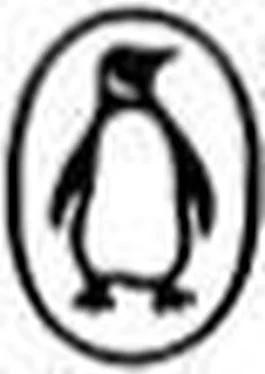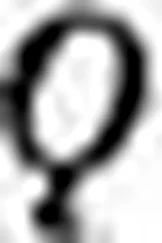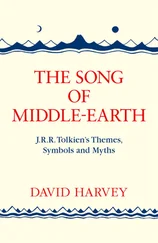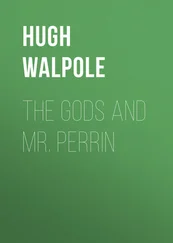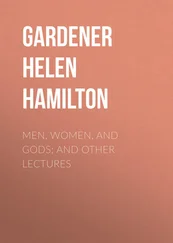Davidson, H. - Gods and Myths of Northern Europe
Здесь есть возможность читать онлайн «Davidson, H. - Gods and Myths of Northern Europe» весь текст электронной книги совершенно бесплатно (целиком полную версию без сокращений). В некоторых случаях можно слушать аудио, скачать через торрент в формате fb2 и присутствует краткое содержание. Жанр: Старинная литература, на английском языке. Описание произведения, (предисловие) а так же отзывы посетителей доступны на портале библиотеки ЛибКат.
- Название:Gods and Myths of Northern Europe
- Автор:
- Жанр:
- Год:неизвестен
- ISBN:нет данных
- Рейтинг книги:5 / 5. Голосов: 1
-
Избранное:Добавить в избранное
- Отзывы:
-
Ваша оценка:
- 100
- 1
- 2
- 3
- 4
- 5
Gods and Myths of Northern Europe: краткое содержание, описание и аннотация
Предлагаем к чтению аннотацию, описание, краткое содержание или предисловие (зависит от того, что написал сам автор книги «Gods and Myths of Northern Europe»). Если вы не нашли необходимую информацию о книге — напишите в комментариях, мы постараемся отыскать её.
Gods and Myths of Northern Europe — читать онлайн бесплатно полную книгу (весь текст) целиком
Ниже представлен текст книги, разбитый по страницам. Система сохранения места последней прочитанной страницы, позволяет с удобством читать онлайн бесплатно книгу «Gods and Myths of Northern Europe», без необходимости каждый раз заново искать на чём Вы остановились. Поставьте закладку, и сможете в любой момент перейти на страницу, на которой закончили чтение.
Интервал:
Закладка:
The Truce with the Vanir
Here then is one myth which Snorri for some reason did not include in his stories about Thor. We know that there were others known to him which were not used in the Prose Edda , since some are introduced into another of his works, Ynglinga Saga . This gives the history of Sweden from very early times, and includes an account of the ending of the war between the Aesir and the Vanir. We are told that when the truce had been made, the Vanir sent as hostages two of their foremost men, Njord and Freyr, and in return the Aesir sent Hoenir, who was tall and handsome, and Mimir, who was very wise. But Hoenir was of little use in counsel because he was so silent, and the Vanir felt that they had not had a fair exchange. They cut off Mimir’s head and sent it to the Aesir. Then Odin took the head and sang spells over it, and was able to talk with it and learn hidden matters.
Gefion
In the same saga there is a story about Gefion, whose name Snorri included among the goddesses. She was sent by Odin to look for land, and King Gylfi of Sweden offered her as much land as she could plough. Gefion visited a giant, had four sons by him, and changed these into a team of oxen. With her mighty team she ploughed round Zealand (the island on which Copenhagen stands) and separated it from Sweden. After this she dwelt at Leire with Skiold, son of Odin.

Other myths about the gods and their dealings with Danish kings and heroes are found in the work of a Danish scholar and ecclesiastic who lived in the twelfth century, Saxo Grammaticus. His stories are badly told in complex, pompous Latin, and are frequently muddled, repetitive, and spoiled by moralizing. They have none of the charm of Snorri’s work, but they contain material of much interest and value. Other myths are implied or referred to in mythological poems about the gods, some of which are in the form of questions and answers exchanged between two supernatural beings, who test one another’s knowledge. The dealings of the gods with famous heroes of old time have not been mentioned in this chapter, but there are many stories about them in the heroic poems and the legendary sagas, and these will be referred to from time to time in the course of this book. Other lost myths can be guessed at from the mythological imagery used by the skaldic poets.
Although it must be realized that Snorri’s tales do not exhaust our knowledge about the gods, they do, however, form a good starting point for study. He gives us an impressive picture of the universe, with the World Tree at the centre. We see the gods in never-ending competition with the giants and monsters who threaten their peace and menace their world. We see them divided amongst themselves by jealousies and quarrels, yet ready to combine against a common enemy when the danger becomes acute. Snorri traces for us the beginning of the universe from the primeval heat and cold which existed before the worlds; he lets us realize that it cannot last for ever, since the hostile forces must triumph for a while when the present worlds are overthrown at Ragnarok, before a new cycle begins. In preserving the finest of the myths for us, he has also set them in a memorable framework.
Yet he leaves many questions unanswered. This no doubt will already be obvious to the reader. Who for instance were the twelve great gods of whom Snorri speaks ? Was there, so to speak, an official list, and are figures like Hoenir, Kvasir, Hoder, and Mimir to be included among the twelve ? Were the first man and woman created from the body of Ymir or from trees on the sea-shore ? Did Thor kill the World Serpent before Ragnarok ? Is Asgard to be thought of as above the earth or beside it, under a root of the World Tree ? Was the tree standing before the creation of the worlds ? Why is first Thor and then Odin called the Father of the Gods ? What happened to the other sons of Bor ? Why were the Vanir at war with the Aesir ? Some of these questions had probably occurred to Snorri, but as in the instance of the fate of the Midgard Serpent in the fishing adventure, he may have been unable to give an answer.
There is also the deeper question of how far these gods in the myths ever claimed real worship and allegiance from men. Some of the stories are clearly skilful literary efforts, primarily for entertainment. How much real belief existed in the background ? Are Thor and Loki serious or comic figures ? Can we respect these sometimes naïve and childish characters of the myths as Snorri represents them ?
It is with some of these questions, and in particular with these last, that this book is concerned. To find a simple answer to them may be difficult, and in some cases impossible. We can only attempt a reasoned survey of the gods who appear in the myths, based on our present knowledge.
Chapter 2
The Gods of Battle
We are all puppets in the hand of aegis-bearing Zeus. In a moment Zeus can make a brave man run away and lose a battle, and the next day the same god will spur him on to fight.
Iliad , XVII
1. Odin, Lord of Hosts
Violence and battle were always close at hand in the lives of men of the heathen period in north-western Europe. It seems fitting then to begin our survey of the beliefs of the north by concentrating on the gods to whom they turned for help in the hazards and chances of warfare.
In the late heathen period there is no doubt as to the main figure who represented the God of Battle, for Odin appears continually as the lord of hosts and giver of victory. In Snorri’s account and in many poems he is shown welcoming to his abode courageous men who fell in battle. His creatures were the raven and the wolf who feast upon the slain, while his dwelling was the hall of the slain, Valhalla. In Norwegian court poetry of the tenth century, he is pictured choosing champions to fall in battle, so that after death they can be enrolled in his warrior band and help him to go out to the last battle of the gods with a magnificent following.
This impressive conception has caught the imagination of later writers, and it is sometimes assumed that all men hoped to go to Valhalla after death. The literature however gives us no real reason to assume that Valhalla was ever regarded as a paradise for all; it was peopled by the chosen ones, the aristocratic warriors who had worshipped the god on earth. Those who joined Odin in Valhalla were princely warriors, kings, and distinguished leaders and heroes who followed the god in life and pledged him their loyal service in return for his help. In the speech of the warrior Biarki, as quoted by Saxo, 1it is clearly Odin who is referred to when he says:
War springs from the nobly born; famous pedigrees are the makers of War. For the perilous deeds which chiefs attempt are not to be done by the ventures of common men… No dim and lowly race, no low-born dead, no base souls are Pluto’s prey, but he weaves the dooms of the mighty, and fills Phlegethon with noble shapes.
Like any earthly ruler, Odin handed out weapons to his chosen followers, and once they had received them, they were bound to give him loyal service till death and beyond it. Thus Sigmund the Volsung received a splendid sword, which the god himself brought into the hall and thrust into the great tree supporting the roof. The sword was regarded both as a family heirloom and a gift from Odin, and when Sigmund’s time came to die, Odin appeared on the battlefield and shattered the blade with his spear. The pieces of the broken sword were reforged for Sigmund’s son, Sigurd, who also found favour with Odin, and was given a wonderful horse bred from Odin’s own steed, Sleipnir.
Not only treasures but valuable counsel might be given to chosen warriors. Odin taught Sigmund spells of battle, and he instructed Hadding, another of his heroes, how to draw up his forces in wedge formation. When Hadding profited by this advice, and led out his army, Odin himself in the form of an old man stood behind them, and shot so swiftly with his bow that ten arrows sped as one, while he drove away the storm clouds which the enemy had raised by magic. Similarly he gave advice to Harald Wartooth, king of the Danes, to whom he appeared as ‘an old man of great height, lacking one eye and clad in a hairy mantle’. 2He promised Harald immunity from wounds, and in return Harald vowed to give him ‘all the souls which his sword cast out of their bodies’. 3Saxo has also preserved in the eighth book of his history the story of what happened to Harald when the god’s favour was withdrawn. First Odin roused up enmity between him and his great friend King Ring, and then he gave to Ring the cherished secret of wedge formation. As Harald drove out to meet Ring in battle, he suddenly recognized the god in the place of his own charioteer. He begged him for one more victory, swearing to dedicate to Odin all who fell in battle. But the driver was relentless, and even as Harald pleaded he flung him down from the chariot, and slew him with his own sword as he fell.
Читать дальшеИнтервал:
Закладка:
Похожие книги на «Gods and Myths of Northern Europe»
Представляем Вашему вниманию похожие книги на «Gods and Myths of Northern Europe» списком для выбора. Мы отобрали схожую по названию и смыслу литературу в надежде предоставить читателям больше вариантов отыскать новые, интересные, ещё непрочитанные произведения.
Обсуждение, отзывы о книге «Gods and Myths of Northern Europe» и просто собственные мнения читателей. Оставьте ваши комментарии, напишите, что Вы думаете о произведении, его смысле или главных героях. Укажите что конкретно понравилось, а что нет, и почему Вы так считаете.
